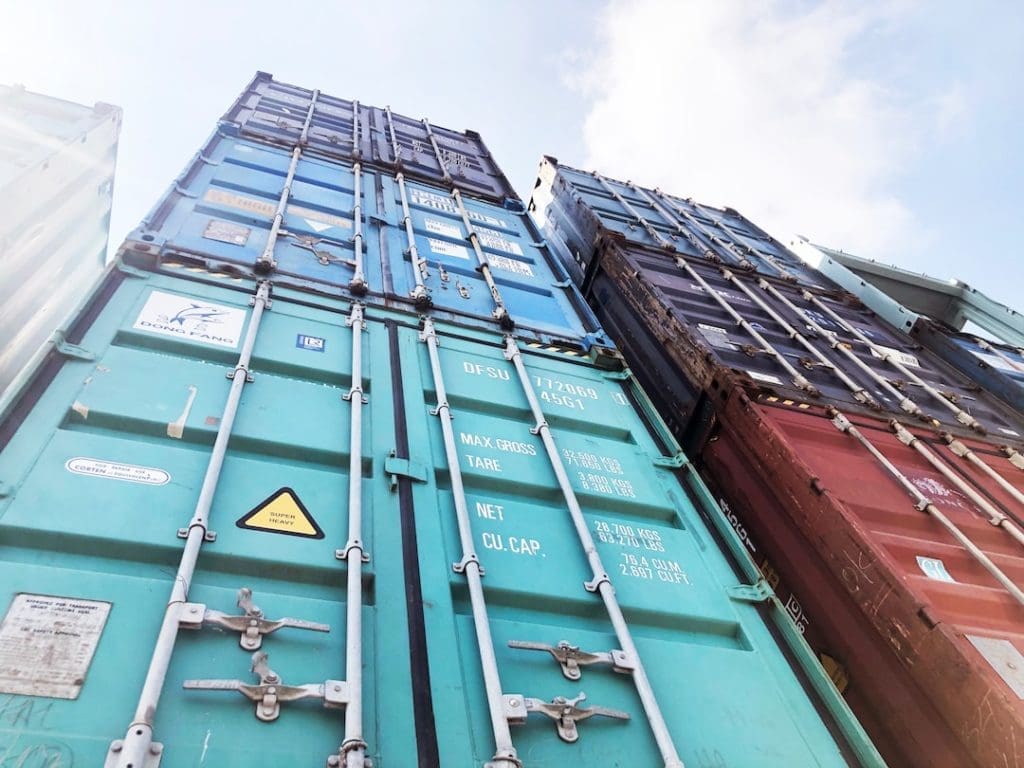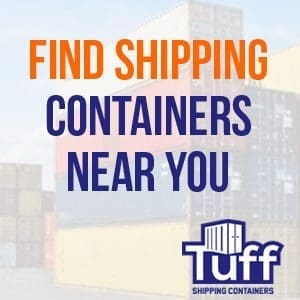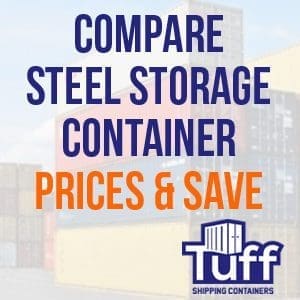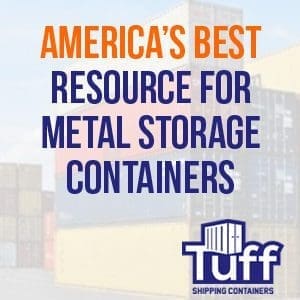
What Are Iso Containers? What Are the Different Types?
Shipping containers have been around forever but there’s a new type of container on the block that is gaining traction — ISO containers. But what are ISO containers and why should you care? In this article, we’ll explore what ISO containers are and dive into the different types.
We’ll also discuss some of the benefits of using ISO containers and how they can help your business.
COMPARE QUOTESWhat Does ISO Mean?
ISO is an acronym that stands for the International Organization for Standardization. It develops and maintains standards for a wide range of products and services, including containers.

The ISO 6346 standard covers the coding, identification, and marking requirements for intermodal freight containers. This standard is what defines an ISO container.
An ISO container is a shipping container that meets the specifications of the ISO 6346 standard. The International Maritime Organization (IMO), which is a United Nations agency administers the standard. The ISO 6346 standard defines the construction, dimensions, and markings for intermodal freight containers.
ISO 6346 Standard
When it comes to shipping containers, the ISO 6346 standard covers construction, dimensions, and markings. The minimum construction requirements for an ISO container are that it must be weatherproof, have a frame, and be strong enough to withstand the rigors of transportation.
ISO containers come in a variety of sizes, but the most common size is 20 feet long, 8 feet wide, and 8 feet tall. ISO containers must have a unique identification number, the owner’s initials, and the country code of the owner.
There are two types of ISO containers, general purpose, and special purpose. General purpose ISO containers can transport a variety of cargo, but special-purpose ISO containers transport specific types of cargo. Let’s take a closer look at each type.
General Purpose ISO Containers
General purpose ISO containers are the most common type of container. They can transport a wide variety of cargo, including:
- Automobiles
- Machinery
- Electronics
- Household goods
Special Purpose ISO Containers
Special purpose ISO containers transport specific types of cargo. Refrigerated containers transport perishable goods that need to stay at a certain temperature. Flatrack containers have no walls or roofs and transport oversize cargo that doesn’t fit in a standard container.
Open-top containers have a removable roof and transport cargo that is too tall for a standard container.
COMPARE QUOTESBenefits of ISO Containers
ISO containers must meet rigorous standards and can withstand the rigors of transportation. This makes them much safer than standard shipping containers. They are also more secure than standard shipping containers. You can equip them with security features such as locks and alarms.

ISO containers are stackable and intermodal, which makes them more efficient to transport than standard shipping containers. They come in a variety of sizes, so they can transport large or small loads. They are also strong and durable, making them ideal for transporting heavy or oversized cargo.
These containers are weather-resistant, so your goods are safe from the elements during transport. They are good for both sea and land transport, giving you flexibility in how you move your goods. They are more efficient to load and unload and you can track ISO containers with GPS technology.
ISO containers are an important part of the global transportation system. They transport a wide variety of cargo all over the world.
ISO Container Types
There are several different types of ISO containers, each made for a specific purpose. The most common types are:
Dry Freight Containers
Dry freight containers are the most common type of ISO container. These containers can transport a variety of dry goods, such as food, clothes, and electronics. These containers can stack two high on a ship or train.
They have several features that make them ideal for transporting dry goods. First, they are weather-resistant, offering your goods protection from the elements during transport. Second, they are stackable, so you can maximize the space you have available for shipping.
Refrigerated (Reefer) Containers
Refrigerated containers, also known as reefer containers, transport perishable goods that must stay cool or frozen. These containers are temperature-controlled and have a mechanical or electrical cooling system.
Refrigerated containers are ideal for transporting perishable goods because they keep your goods at a consistent temperature. This ensures that your goods will not spoil during transport.
Insulated Containers
Insulated containers transport sensitive cargo that needs protection from the elements. These containers have insulated walls and a climate-control system.
Insulated containers are ideal for transporting sensitive cargo because they keep your goods at a consistent temperature. This protects your goods from extreme temperatures during transport.
Tank Containers
Tank containers transport liquids and gases. These containers have a tank with a frame that surrounds them.
If you are shipping liquids or gases, a tank container is the best option. These containers hold large quantities and are good for both sea and land transportation.
What liquids can you transport using an ISO tank? ISO tanks often transport:
- Diesel
- Fuel oil
- Gasoline
- Lubricating oil
- Chemicals
Open Top Containers
Open-top containers transport goods that must load from the top. These containers have a removable roof panel and canvas walls.
Flat Rack Containers
Flat rack containers transport oversized cargo that cannot fit in a standard container. These containers have no sides or roofs, and they have a metal frame supporting them. Flat rack containers come in a variety of sizes, but the most common size is the 20-foot container.
Open Side Containers
Open side containers transport goods that must load from the side. These containers have removable walls on one or both sides. Open-side containers also come in a variety of sizes, but the most common size is the 20-foot container.
Swap Container
A swap container is a container that serves for both sea and land transport. These containers have a special frame that allows their use for different types of transport.
Lined Containers
Lined containers transport corrosive materials. These containers have a lining that protects the container from corrosive materials. They are made of stainless steel, aluminum, or fiberglass.
Special Equipment Containers
Special equipment containers transport oversize or dangerous cargo. These containers have a variety of features that make them ideal for transporting oversized or dangerous cargo. Some of these features include:
- reinforced floors
- tie down points
- lifting eyes
- blocking and bracing
Specialty Containers
There are many other types of specialty containers not listed here. These containers transport specific types of cargo and transportation. These containers carry cargo such as:
- Hazardous materials
- Large machinery
- Live animals
Can You Transport Food Using ISO Containers?
Yes, you can transport food using ISO container tanks. These tanks keep food fresh during transport.
The above containers all have a special lining or feature that makes them ideal for transporting these specific types of goods. They eliminate the risk of damage to your goods during transport.
ISO Container Specifications
ISO containers must meet certain specifications to qualify for transportation uses. The most important specifications are:
- ISO containers must be at least 20 feet (6.1 m) long but can be up to 45 feet (13.7 m) long
- ISO containers must be at least 8 feet (2.4 m) wide but can be up to 9.6 feet (2.9 m) wide
- ISO containers must be at least 8.5 feet (2.6 m) tall but can be up to 9.6 feet (2.9 m) tall
- ISO containers can weigh up to 67,200 pounds (30,480 kg)
- ISO containers have a maximum cubic capacity of 2,700 cubic feet (76.5 m3)
When it comes to sizes, the most common type is the 20-foot container, which most times transport general cargo. These containers can stack two high on a ship or train. For larger loads, 40-foot containers are available. These transport general cargo, and sometimes specialized goods like construction materials.
For even larger loads, there are also 45-foot containers. These transport very heavy cargoes, such as machinery or vehicles.
Iso containers must meet strict specifications and are tested to ensure that they meet these standards. This ensures that iso containers are safe and reliable for transport.
Other Uses For Containers
There are many creative ways to use containers outside of shipping. Some people use them for homes or offices. Containers can also serve as storage units, classrooms, or exhibition spaces.
Container Homes
Container homes are becoming popular housing options, offering a unique blend of affordability, durability, and sustainability. Made from upcycled shipping containers, they are easy to assemble, and are built to last. Container homes are energy-efficient due to their dense construction and the ability to add solar panels and other eco-friendly features.

And because they are made from recycled materials, container homes have a lower environmental impact than traditional stick-built homes. For all of these reasons, it’s no wonder that container homes are becoming one of the most popular housing options around.
Office Spaces
Containers can also create unique and affordable office spaces. Shipping container offices are more cost-effective than traditional brick-and-mortar offices. This is due to their quick and easy assembly methods.
Container offices are also durable and sustainable, thanks to their construction materials. And because you can outfit them with solar panels and other green features, container offices are very energy-efficient.
Storage Units
Containers can also function as storage units. They are made from durable materials and have weatherproof construction containers making them ideal storage units.
Containers can store everything from furniture to cars to boats. And because you can lock them, containers provide secure storage for your valuable belongings.
Classrooms
A popular use for containers is classrooms. Business places and educational organizations often use containers as temporary or permanent classrooms. Container classrooms are an affordable and sustainable option for organizations that need additional space for their educational programs.
Some schools use containers because of their portability. In the event of a natural disaster, container classrooms can relocate to a safe area much quicker.
How Long Does a Container Last?
With proper maintenance, a container can last for decades. The average lifespan of a container is about 25 years. However, some containers last for 40 years or more.
How To Purchase A Shipping Container
When you’re ready to purchase a shipping container, there are a few things to keep in mind. First, decide what size and type of container you need. ISO containers come in a variety of sizes, from small 8-foot (2.4-meter) containers to large 45-foot (13.7-meter) containers.
Next, decide what you will be using the container for. Will you be using it for storage, or will you be using it as an office or classroom? Do you need a refrigerated container or one with open sides?
Knowing what you’ll be using the container for will help you determine what size and type of container you need.
Finally, choose a reputable supplier. Many companies sell shipping containers, but not all of them are equal. Do some research to find a company that has a good reputation and that offers fair prices.
What to Look for When Purchasing
When you’re shopping for a shipping container, there are a few things to look for. First, make sure that the container is made from high-quality materials. Shipping containers are made from steel, so make sure that the steel is durable and rust-resistant.
Also, check to see that the container has been properly welded and that all of the doors and seams are watertight.
Make sure that the container comes with a warranty. A good warranty will protect you in case of any problems with the container. And if you’re purchasing a used container, make sure that you get a comprehensive inspection report before making your purchase.
Get Your Hands on the Best ISO Containers
ISO containers are becoming more and more popular for a variety of reasons. Whether you’re looking for storage on your property, or are in the business of transporting goods, using ISO containers is a great option.
When shopping for high-quality containers best for your needs, our team at Tuff Shipping Containers is the go-to expert. We have a wide range of options to choose from. Get a quote from us today and let us help you get started with this versatile and durable shipping solution!
COMPARE QUOTES
Leave a Reply